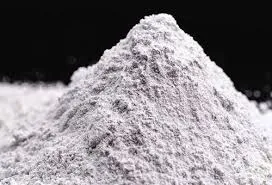
дец . 23, 2024 04:09 Back to list
Exploring the Benefits and Applications of Hydroxypropyl Methylcellulose in Modern Industries
Understanding Hydroxypropyl Methylcellulose A Versatile Compound
Hydroxypropyl Methylcellulose (HPMC) is a non-ionic cellulose ether derived from the cellulose found in plant cell walls. Its unique chemical properties make it a crucial ingredient across numerous industries, including pharmaceuticals, food, cosmetics, and construction. This article explores the composition, properties, applications, and benefits of HPMC, highlighting why it has gained such widespread use.
Composition and Properties
HPMC is produced by chemically modifying cellulose. The process involves two primary reactions the substitution of hydroxyl groups in the cellulose molecule with hydroxypropyl and methyl groups. This modification enhances the compound’s solubility and creates a semi-synthetic polymer that exhibits a wide range of viscosity profiles.
Physically, HPMC is found in powdered form and is often white or off-white in color. Its solubility in water varies depending on the degree of substitution and the molecular weight. Lower molecular weight HPMC dissolves readily in cold water, while higher molecular weight variants require heating to dissolve efficiently. This property allows for controlled viscosity and gel formation in various applications.
Applications in the Pharmaceutical Industry
In pharmaceuticals, HPMC serves multiple roles, primarily as a binder, coating agent, and thickening agent. It's commonly employed in the formulation of tablets and capsules, where it helps maintain the uniformity of the mixture and ensures proper drug release. Due to its non-toxic nature, HPMC is ideal for use in products intended for human consumption. Additionally, it is used in the development of controlled-release formulations, offering a steady release of medication over time, which enhances efficacy and patient compliance.
HPMC is also utilized in the ophthalmic sector as an artificial tear agent. Its gel-forming properties provide lubrication and moisture retention, making it an effective treatment for dry eye syndrome.
Food Industry Applications
In the food industry, HPMC is praised for its stabilizing, thickening, and emulsifying properties. It enhances the texture and mouthfeel of various food products, including sauces, dressings, and baked goods. HPMC acts as a fat replacer, improving the moisture retention of low-fat products while maintaining their palatability. As a vegetarian substitute for gelatin, it has gained traction in the production of plant-based and vegan food products.
hydroxypropyl methylcellulose

Moreover, HPMC's ability to form films and gels makes it a valuable ingredient in the production of gluten-free products, offering texture and structural integrity that would otherwise be lost without gluten.
Cosmetics and Personal Care
In the cosmetics and personal care industry, HPMC is used in various formulations, including lotions, creams, shampoos, and gels. Its thickening properties help achieve a desirable viscosity while providing a smooth application experience. Additionally, HPMC is often used in hair products to enhance styling effects by providing hold and stability.
The compound is also used in skin care products due to its soothing and moisturizing properties. It helps maintain hydration levels in the skin and serves as a protective barrier against environmental factors. Due to its mild nature, HPMC is suitable for sensitive skin and is often incorporated into hypoallergenic formulations.
Construction Industry Applications
HPMC finds extensive use in the construction industry, particularly in cement and mortar formulations. Its role as a thickener helps improve workability and adhesion while reducing water loss during the setting process. This property ensures that construction materials maintain their desired properties throughout the application phase, leading to improved durability and performance of the final product.
Furthermore, HPMC is used in the production of tile adhesives, wall plasters, and other building materials, enhancing their application properties and overall effectiveness.
Conclusion
Hydroxypropyl Methylcellulose is a highly versatile compound with a broad range of applications across various industries. Its unique properties, including solubility, thickening, and film-forming capabilities, contribute to its essential role in pharmaceuticals, food, cosmetics, and construction. As consumer demands evolve and industries seek more effective, safe, and sustainable solutions, HPMC is likely to continue showcasing its importance in modern formulations, making it a key ingredient in numerous products we use daily.
-
Versatile Hpmc Uses in Different Industries
NewsJun.19,2025
-
Redispersible Powder's Role in Enhancing Durability of Construction Products
NewsJun.19,2025
-
Hydroxyethyl Cellulose Applications Driving Green Industrial Processes
NewsJun.19,2025
-
Exploring Different Redispersible Polymer Powder
NewsJun.19,2025
-
Choosing the Right Mortar Bonding Agent
NewsJun.19,2025
-
Applications and Significance of China Hpmc in Modern Industries
NewsJun.19,2025







